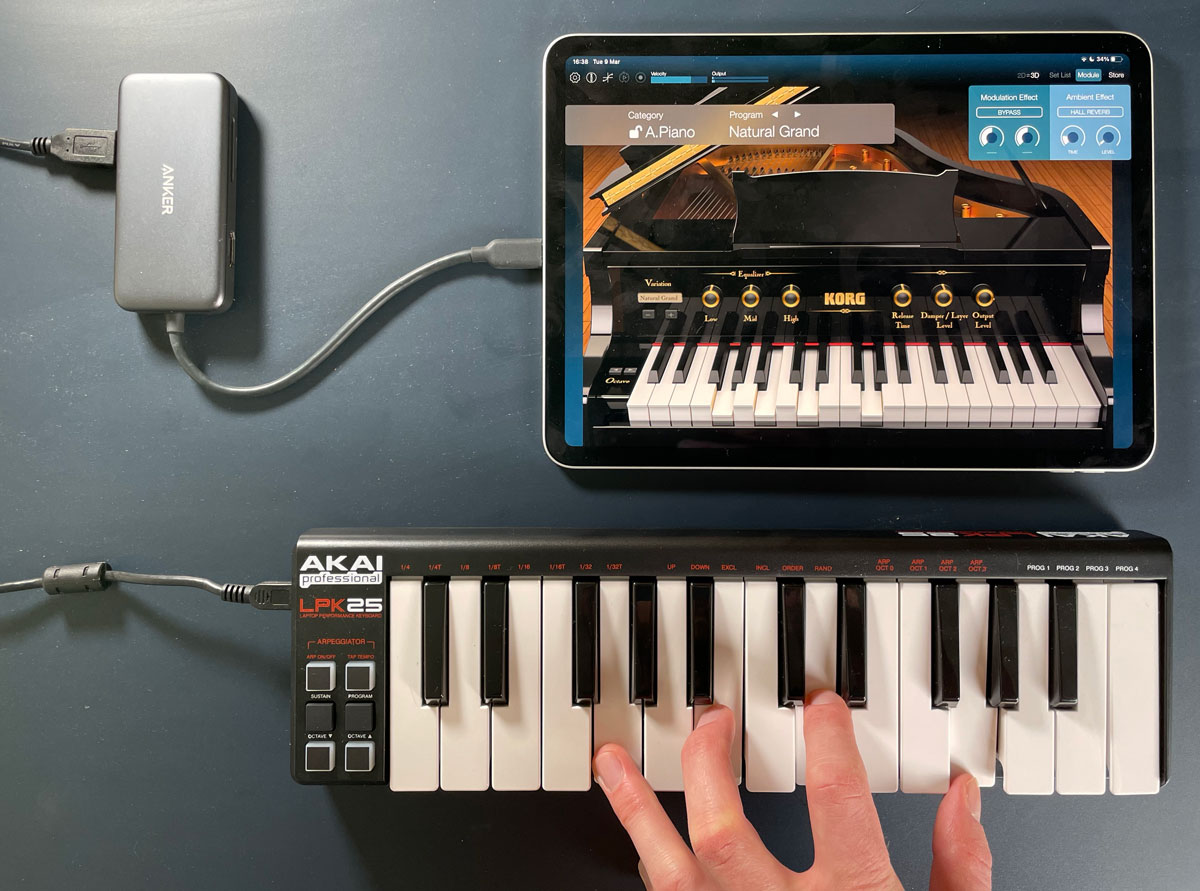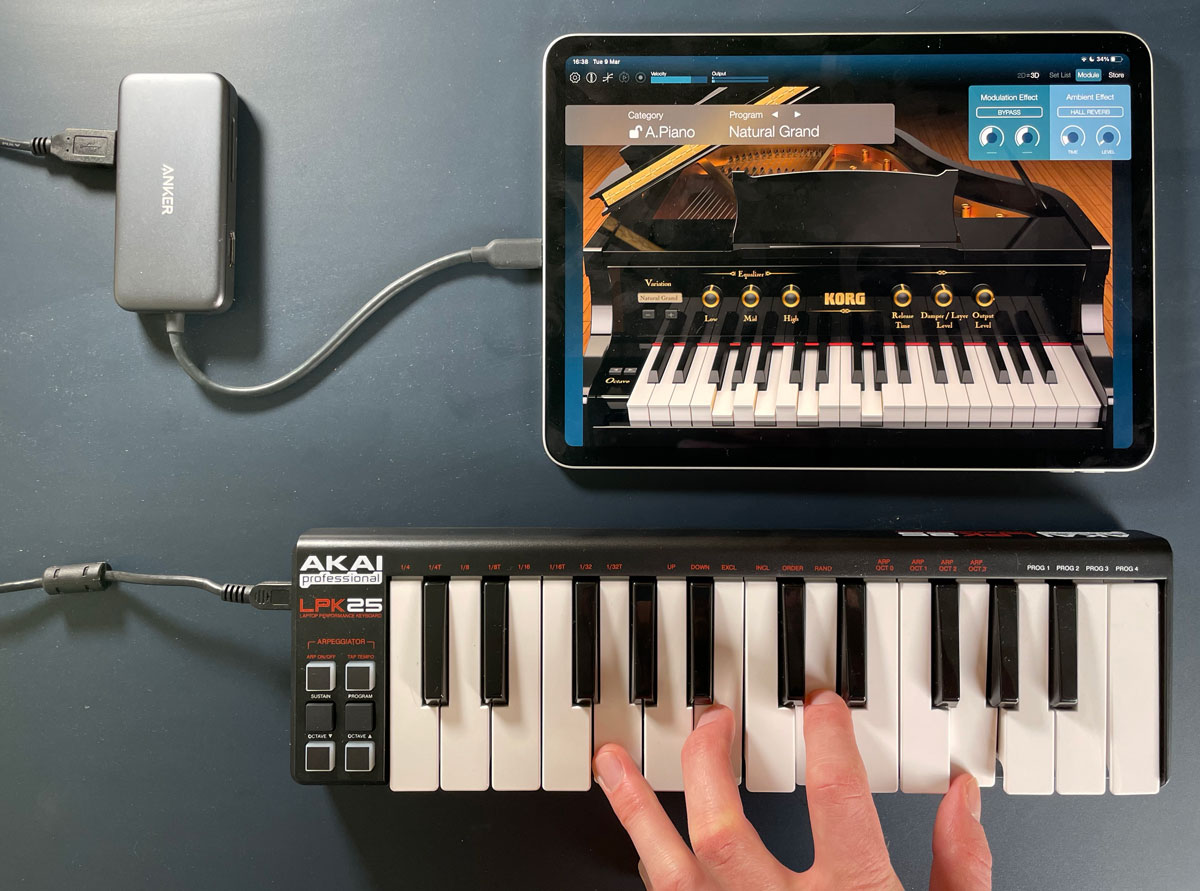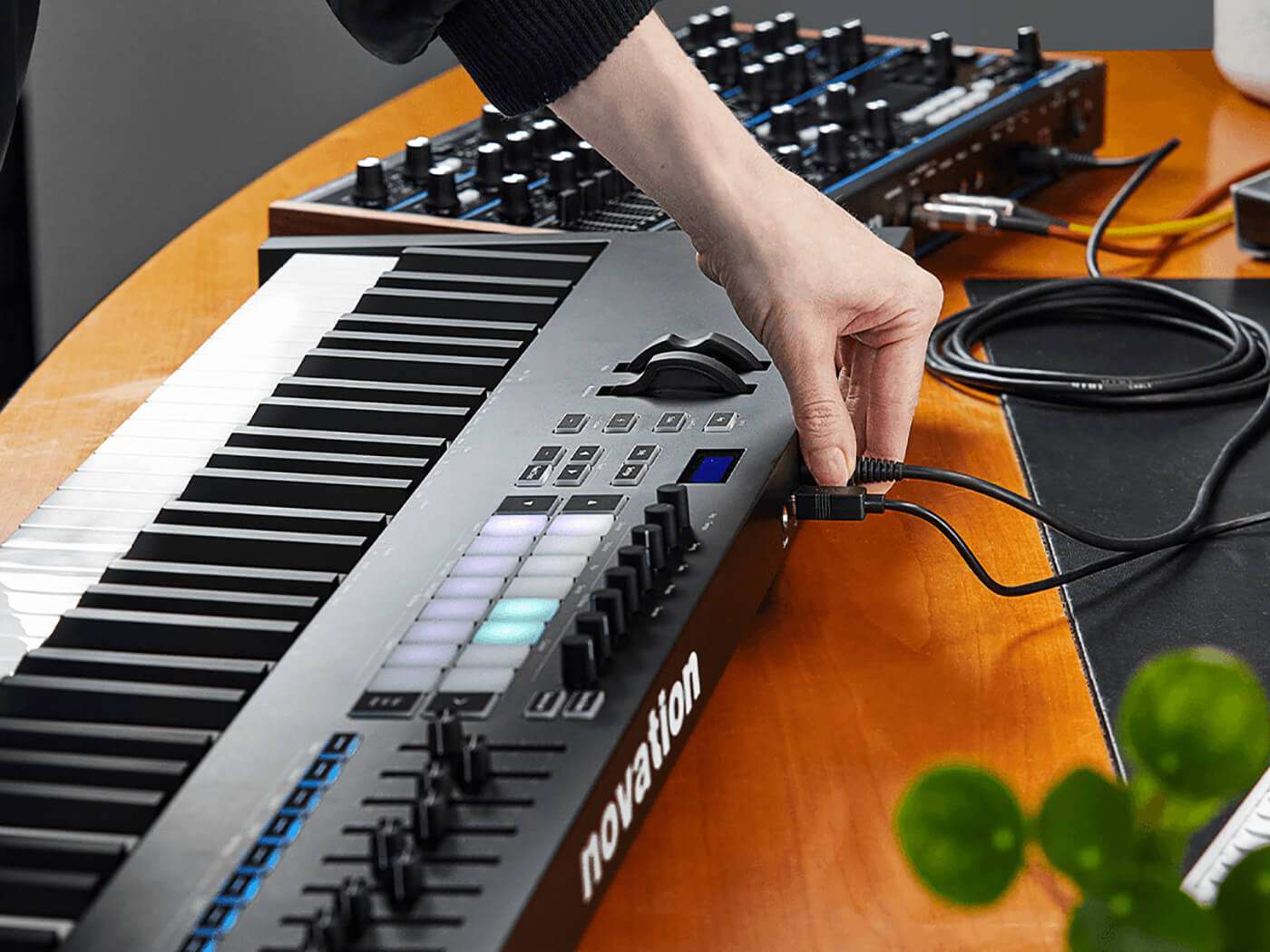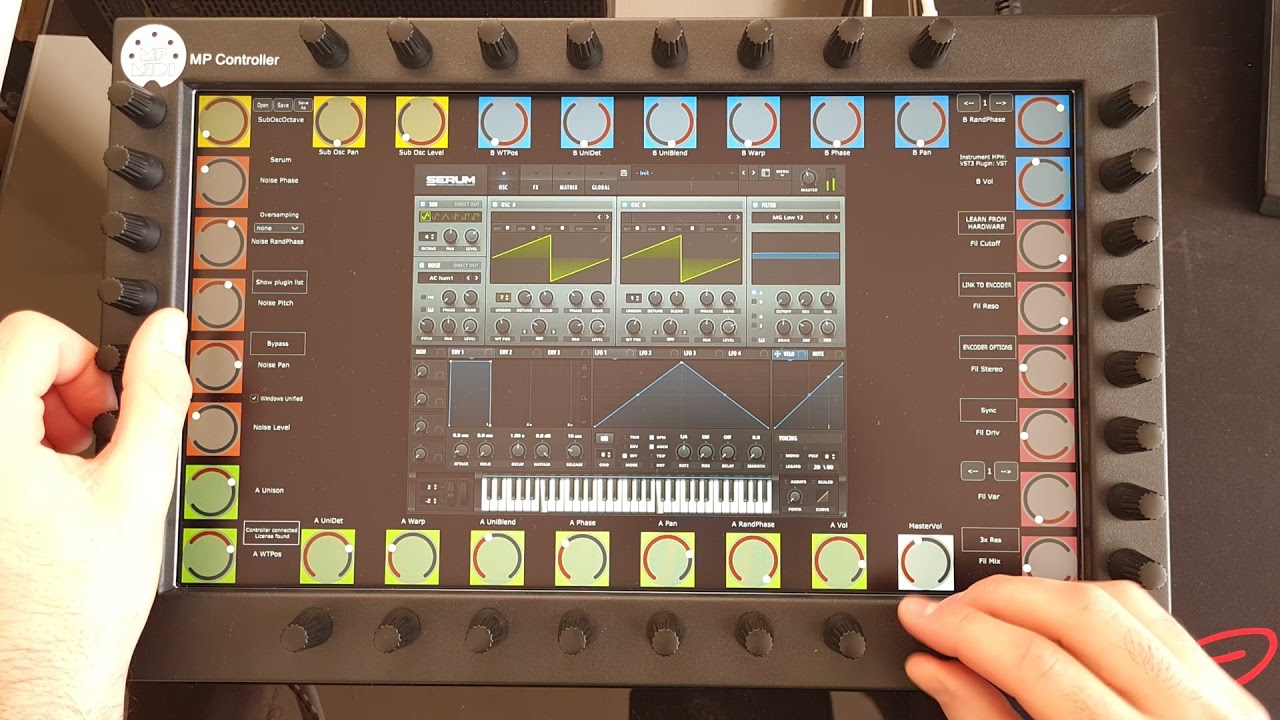Introduction
So, you've got a MIDI keyboard, and now you want to expand your sonic horizons by adding new sounds to your music. A sound module is the perfect tool to achieve this. By connecting a sound module to your MIDI keyboard, you can access a wide range of high-quality instrument sounds, from pianos and strings to synthesizers and drums. This article will guide you through the process of connecting a sound module to a MIDI keyboard, allowing you to unlock a world of musical possibilities.
Whether you're a seasoned musician or just starting out, adding a sound module to your setup can elevate your music production to new heights. With the ability to layer multiple sounds, create custom patches, and access a vast library of instrument samples, a sound module opens the door to endless creativity. By understanding the fundamentals of MIDI and selecting the right sound module for your needs, you can seamlessly integrate it with your MIDI keyboard and begin exploring a universe of sounds.
In the following sections, we will delve into the intricacies of MIDI technology, discuss the considerations for choosing the best sound module for your setup, and provide a step-by-step guide for connecting the sound module to your MIDI keyboard. By the end of this article, you will have the knowledge and confidence to embark on this musical journey, expanding your sonic palette and bringing your compositions to life with the power of MIDI and a quality sound module. Let's dive in and explore the exciting possibilities that await when you connect a sound module to your MIDI keyboard.
Understanding MIDI
MIDI, which stands for Musical Instrument Digital Interface, is a universal protocol that enables electronic musical instruments, computers, and other audio devices to communicate, control, and synchronize with each other. Unlike audio signals, MIDI data does not transmit sound directly; instead, it carries information about musical notes, dynamics, pitch, and control signals such as modulations and sustain. This digital communication standard revolutionized the way musicians create and produce music, offering unparalleled flexibility and versatility in connecting different musical components.
At its core, MIDI is a language that allows electronic instruments to speak to each other, facilitating seamless integration and interoperability. When you press a key on a MIDI keyboard, for instance, it generates a MIDI note message containing information about which note was played, how hard it was struck (velocity), and how long it was held. This data is then transmitted to a MIDI-compatible device, such as a sound module, synthesizer, or computer, which interprets the message and produces the corresponding sound.
One of the key advantages of MIDI is its ability to transmit multiple channels of information simultaneously. This means that a single MIDI cable can carry data for multiple musical elements, such as melody, harmony, and rhythm, allowing for complex musical arrangements to be transmitted and controlled with ease. Additionally, MIDI data can be edited, manipulated, and recorded in real time, providing musicians and producers with extensive creative possibilities.
Understanding MIDI is essential when connecting a sound module to a MIDI keyboard, as it forms the backbone of the communication between the two devices. By grasping the fundamentals of MIDI, including channels, messages, and control parameters, you can harness the full potential of your MIDI setup and explore the boundless opportunities for musical expression.
As we continue our exploration, we will delve deeper into the intricacies of MIDI and its role in connecting a sound module to a MIDI keyboard. With a solid understanding of MIDI, you will be well-equipped to navigate the technical aspects of this process and unleash the full creative potential of your musical endeavors.
Choosing the Right Sound Module
When selecting a sound module to complement your MIDI keyboard, several factors come into play to ensure that you find the perfect match for your musical needs. The first consideration is the type of sounds you wish to incorporate into your compositions. Whether you’re looking for realistic instrument emulations, electronic synth textures, or cutting-edge sound effects, there is a wide array of sound modules available, each with its own sonic capabilities and specialties.
Another crucial aspect to consider is polyphony, which refers to the number of simultaneous notes a sound module can produce. For complex arrangements and dense musical passages, a sound module with high polyphony is essential to avoid note cutoffs and voice stealing. Additionally, the quality of the sound samples and the overall sound engine of the module should align with your artistic vision, ensuring that the timbres and textures it offers resonate with your musical style.
Connectivity options are also paramount when choosing a sound module. Look for modules that offer MIDI input and output, as well as audio outputs for connecting to your mixer, audio interface, or studio monitors. USB connectivity can also streamline the integration process, allowing for seamless communication between the sound module and your computer-based music production setup.
Furthermore, consider the control options available on the sound module. Parameters such as envelope settings, filter controls, and modulation capabilities can significantly impact the expressiveness and versatility of the module. Whether it offers intuitive front-panel controls, software-based editing, or compatibility with external MIDI controllers, the level of control and customization should align with your workflow and performance requirements.
Lastly, factor in the portability and form factor of the sound module. Whether you plan to integrate it into a studio setup or incorporate it into a live performance rig, the physical dimensions, weight, and mounting options of the module play a pivotal role in its usability and convenience.
By carefully evaluating these considerations and conducting thorough research, you can select a sound module that seamlessly integrates with your MIDI keyboard, elevating your musical creations with an expansive palette of high-quality sounds and textures. The next step is to connect the chosen sound module to your MIDI keyboard, setting the stage for a harmonious union of musical expression and technological innovation.
Connecting the Sound Module to the MIDI Keyboard
Once you’ve chosen the ideal sound module to complement your MIDI keyboard, the next step is to establish a seamless connection between the two devices. This process involves linking the MIDI output of the keyboard to the MIDI input of the sound module, enabling the transmission of musical data from the keyboard to the module for sound generation.
Begin by locating the MIDI output port on your MIDI keyboard. This port is typically labeled as “MIDI OUT” and may be a standard 5-pin DIN connector or a USB port, depending on the model of your keyboard. Similarly, identify the MIDI input port on your sound module, which is usually labeled as “MIDI IN.” If your sound module offers multiple MIDI inputs, select the primary input for connecting to the MIDI keyboard.
Using a standard MIDI cable, connect the MIDI output port of your keyboard to the MIDI input port of the sound module. Ensure that the cable is securely plugged into both devices, as a loose connection can result in data transmission errors and signal dropouts. If your MIDI keyboard and sound module both feature USB connectivity, you can use a USB cable to establish the connection, following the manufacturer’s guidelines for USB MIDI communication.
Once the physical connection is established, power on both the MIDI keyboard and the sound module. Verify that the MIDI channels on both devices are set to correspond with each other. MIDI channels are used to designate different instruments or sound sources within the MIDI system. For example, if your sound module is set to receive MIDI input on channel 1, ensure that your MIDI keyboard is transmitting data on the same channel to establish proper communication.
Additionally, if your sound module offers multiple MIDI channels and multitimbral capabilities, you can assign different MIDI channels to individual instrument sounds, allowing for independent control and triggering of various sounds from your MIDI keyboard. This feature is particularly useful for creating layered textures and orchestrating complex arrangements using the sound module’s diverse sonic palette.
By following these steps and ensuring that the MIDI communication settings are aligned between your MIDI keyboard and the sound module, you can successfully connect the two devices, opening the gateway to a vast array of expressive and dynamic sounds at your fingertips. With the physical and digital link established, you are now ready to explore the creative possibilities that arise from this harmonious integration.
Setting Up the MIDI Channels
Configuring the MIDI channels on your MIDI keyboard and sound module is a crucial step in ensuring that they communicate effectively and harmoniously. MIDI channels serve as virtual pathways through which musical data is transmitted, allowing for the independent control and selection of different instruments and sounds within the MIDI system.
Begin by accessing the MIDI channel settings on your MIDI keyboard. Depending on the model and manufacturer, this may involve navigating through the keyboard’s menu system, using dedicated buttons or knobs, or accessing the settings via software or a companion app. Consult the user manual for specific instructions on how to access and modify the MIDI channel settings.
Once you have accessed the MIDI channel settings, you can assign a specific MIDI channel to the keyboard’s output. This channel designation determines which sound module or device will receive the MIDI data transmitted by the keyboard. For example, if you wish to control a piano sound on your sound module, you would assign the corresponding MIDI channel to the piano sound within the module’s settings.
Similarly, access the MIDI channel settings on your sound module. Depending on the module’s interface and control options, you can typically assign MIDI channels to individual instrument sounds or patches, allowing for precise control and selection of sounds from your MIDI keyboard. If your sound module supports multitimbral operation, you can assign different MIDI channels to multiple instrument sounds, enabling simultaneous playback and control of diverse sounds from a single MIDI keyboard.
Ensure that the MIDI channels assigned on your MIDI keyboard align with the MIDI channels set on the sound module. This synchronization is essential for seamless communication and accurate sound triggering. By matching the MIDI channels between the keyboard and the sound module, you establish a direct correspondence that enables you to access and control the desired sounds from the module using the keyboard’s keys and controls.
As you set up the MIDI channels, consider the creative possibilities that arise from this configuration. With the ability to assign different sounds to distinct MIDI channels, you can create layered textures, orchestrate complex arrangements, and explore a diverse sonic palette with precision and expressiveness. The flexibility provided by MIDI channels empowers you to craft intricate musical compositions and performances with ease.
By meticulously configuring the MIDI channels on your MIDI keyboard and sound module, you lay the foundation for a cohesive and responsive musical system, enabling you to harness the full potential of your MIDI setup and explore the expansive world of sound and expression at your fingertips.
Testing the Connection
After setting up the MIDI channels and establishing the physical connection between your MIDI keyboard and sound module, it is essential to test the connection to ensure that both devices communicate effectively and that the sound module responds accurately to MIDI data transmitted from the keyboard.
Begin by selecting a familiar sound or instrument patch on your sound module. This could be a piano, a string ensemble, a synth lead, or any sound that you can readily identify. Ensure that the MIDI channel assigned to this sound matches the MIDI channel configured on your MIDI keyboard. By aligning the MIDI channels, you establish a direct link between the keyboard and the specific sound within the module.
Next, play a few notes on your MIDI keyboard and listen for the corresponding sound from the connected sound module. Verify that the sound is triggered accurately and that the module responds to nuances such as velocity, aftertouch, and modulation from the keyboard. This test confirms that the MIDI data transmitted from the keyboard is received and interpreted by the sound module, resulting in the generation of the intended sound.
Explore the full range of the keyboard to ensure that the sound module accurately reproduces the dynamics and articulations of your performance. Pay attention to how the module responds to sustained notes, staccato passages, and expressive playing techniques, as this demonstrates the responsiveness and accuracy of the MIDI connection.
Additionally, if your sound module offers multitimbral capabilities, test the simultaneous playback of multiple sounds triggered from different MIDI channels on the keyboard. This allows you to verify that the module can independently reproduce and control various instrument sounds, enabling you to create layered textures and orchestrate complex arrangements with ease.
During the testing phase, it is beneficial to monitor the MIDI activity indicators on both the keyboard and the sound module. These indicators, often represented by LED lights or display notifications, provide visual feedback on MIDI data transmission, ensuring that the devices are actively communicating and exchanging musical information.
By thoroughly testing the connection between your MIDI keyboard and sound module, you can confirm that the MIDI setup functions seamlessly, allowing for expressive and accurate control over a diverse range of instrument sounds. This validation process ensures that the MIDI communication is reliable and responsive, setting the stage for immersive musical performances and creative exploration.
Conclusion
Connecting a sound module to a MIDI keyboard opens up a world of sonic possibilities, empowering musicians and producers to access a diverse range of high-quality instrument sounds and textures. Through an understanding of MIDI technology, careful selection of the right sound module, and meticulous configuration of MIDI channels, the process of integrating these devices culminates in a seamless and expressive musical system.
By delving into the intricacies of MIDI and its role in facilitating communication between electronic musical instruments, you gain insight into the digital language that underpins modern music production. This knowledge forms the foundation for harnessing the power of MIDI to control and manipulate sounds, enabling you to shape your musical compositions with precision and creativity.
The process of choosing the right sound module involves considering factors such as sound quality, polyphony, connectivity, control options, and portability. By carefully evaluating these aspects, you can select a sound module that complements your artistic vision and seamlessly integrates with your MIDI keyboard, providing a rich and versatile sonic palette for your musical endeavors.
Establishing the physical and digital connection between the MIDI keyboard and the sound module is a pivotal step in realizing the potential of this musical partnership. By connecting the MIDI output of the keyboard to the MIDI input of the sound module and configuring the MIDI channels to correspond with each other, you create a direct link that enables expressive and responsive control over a myriad of instrument sounds and textures.
Through meticulous testing of the connection, you verify that the MIDI setup functions flawlessly, ensuring that the sound module accurately reproduces the musical data transmitted from the keyboard. This validation process confirms the reliability and responsiveness of the MIDI communication, setting the stage for immersive musical performances and creative exploration.
As you embark on this journey of connecting a sound module to your MIDI keyboard, you embrace the boundless opportunities for musical expression and innovation. The harmonious integration of these devices empowers you to craft intricate compositions, explore diverse sonic landscapes, and elevate your music production to new heights.
With a firm grasp of MIDI technology, a carefully chosen sound module, and a seamlessly connected MIDI keyboard, you are poised to embark on a musical odyssey filled with limitless creativity and sonic exploration. The fusion of technology and artistry culminates in a harmonious symphony of expression, where the boundaries of musical possibility are expanded, and the language of sound is spoken with unparalleled fluency.

























